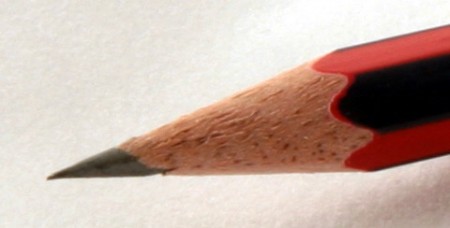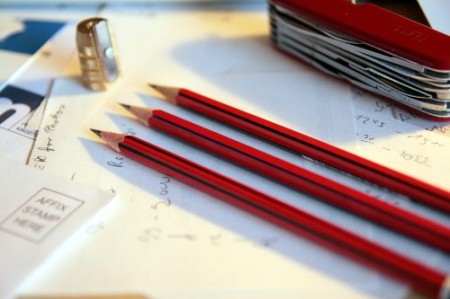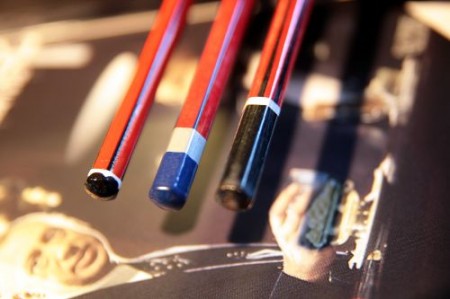Reynolds 432
Like the Nataraj 621, reviewed at pencil talk, the Reynolds 432 is a pencil from India with a design very similar to the Staedtler tradition. The differences in appearance are minor.
- All three pencils are red with dark coloured stripes. While the Staedtler tradition and the Nataraj 621 have black stripes, the Reynolds 432 has blue stripes.
- All three pencils are hexagonal, but the Staedtler tradition and the Reynolds 432 have the stripes on the edges, the Nataraj has the stripes on the faces.
- All three are eraserless with different finished caps. The quality of the finished cap of the Nataraj is rather poor.

Reynolds:
The history of Reynolds is a bit complicated.
Milton Reynolds from Chicago established the Reynolds pen company in 1945, but the company was later bought by Edmond Regnault who was running a successful pen company in France since 1927. Since 1974 the company was run by Edmond Regnault’s sons until it was sold to investors in 1993.

The company behind the Reynolds 432 pencil, G. M. Pens International Pvt. Ltd., introduced the Reynolds brand to India in 1986 and is the exclusive Licensee of Reynolds, France. Newell Rubbermaid bought Reynolds in 1999/2000, which is now part of Sanford Reynolds SA, and closed the factory in France in 2007, sparking a boycott of products from Reynolds and Newell Rubbermaid.
Today Reynolds India produces all kinds of pens, including two different types of wooden pencils and two different types of mechanical pencils.

The pencil:
Reynold’s website highlights the following features of this pencil, available only in HB
- Specially bonded lead for extra strength
- Special quality lead for clean, fine impressions
- Conforms to European standards of child safety
- Soft wood for easy sharpening
The fact that there are paws printed on the 432 and the child safety standards mentioned on the web site seem to suggest that this pencil is aimed at children, but the “conservative look” of the pencil would suggest otherwise.
The wood used for the Reynolds 432 seems to be the similar to the wood used for the Nataraj 621. In a comment to the Nataraj 621 review at pencil talk Harshad Raveshia identified the wood used for the 621 as Vatta wood (Macaranga Peltata). The wood used for the 432 has a similar appearance, but is not red. Instead I would describe the colour as slightly yellow. It could of course still be the Vatta tree, just coloured differently, or it could be a normal deviation expected for this type of wood.

A few other observations:
- The diameter of the Reynolds 432 is a bit bigger than that of a Staedtler tradition.
- The lead of the Reynolds 432 seems to be slightly harder than that of the Nataraj 621.
- I did not have any lead breakage with the Reynolds 432, but I did encounter this problem with the Nataraj 621.
- The hardness of the 432 HB’s lead can be roughly compared to the hardness of a Mars Lumograph 2B or a Faber-Castell 9000 3B.

Conclusion:
The wood is a bit harder than the wood typically used for pencils in Europe. This might have implications for the blade of your sharpener, but other attributes of the wood, like the texture and appearance are very pleasant. Writing with the Reynolds 432 is fairly smooth and overall this is a very nice pencil.
I would like to thank Sameer Khanna who agreed to swap the Reynolds 432 and the Nataraj 621 for two Staedtler Noris pencils.